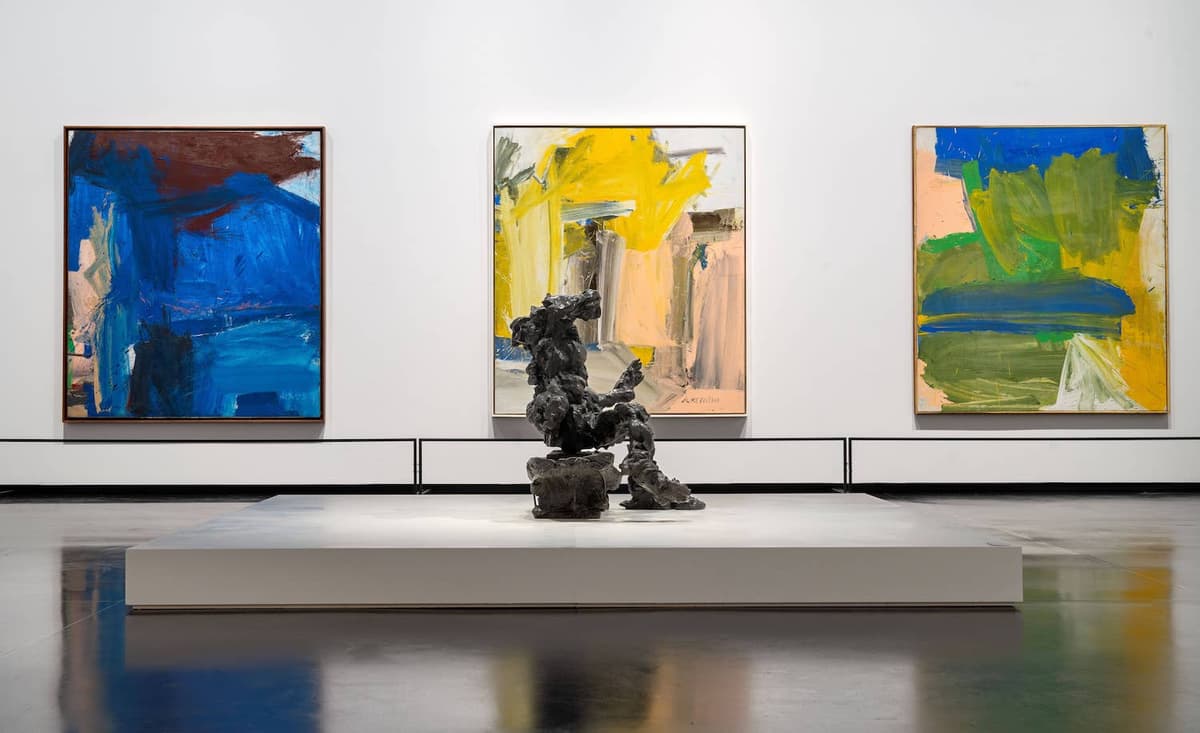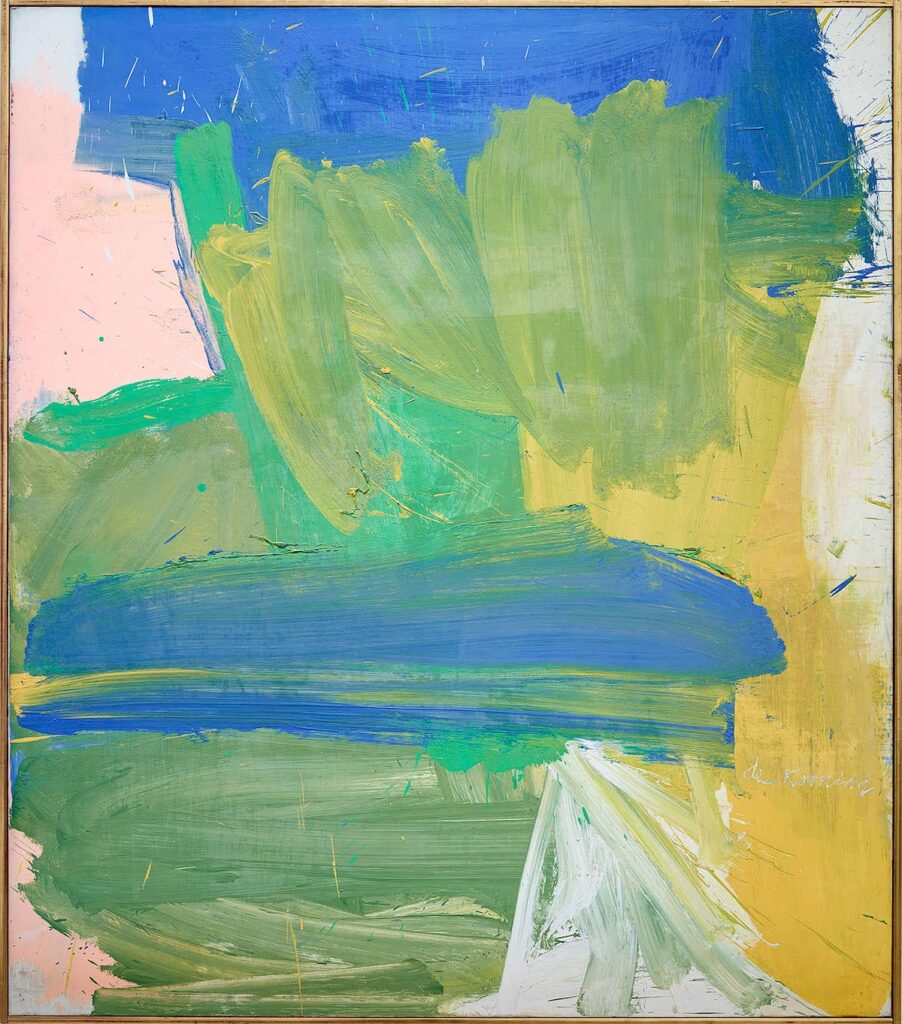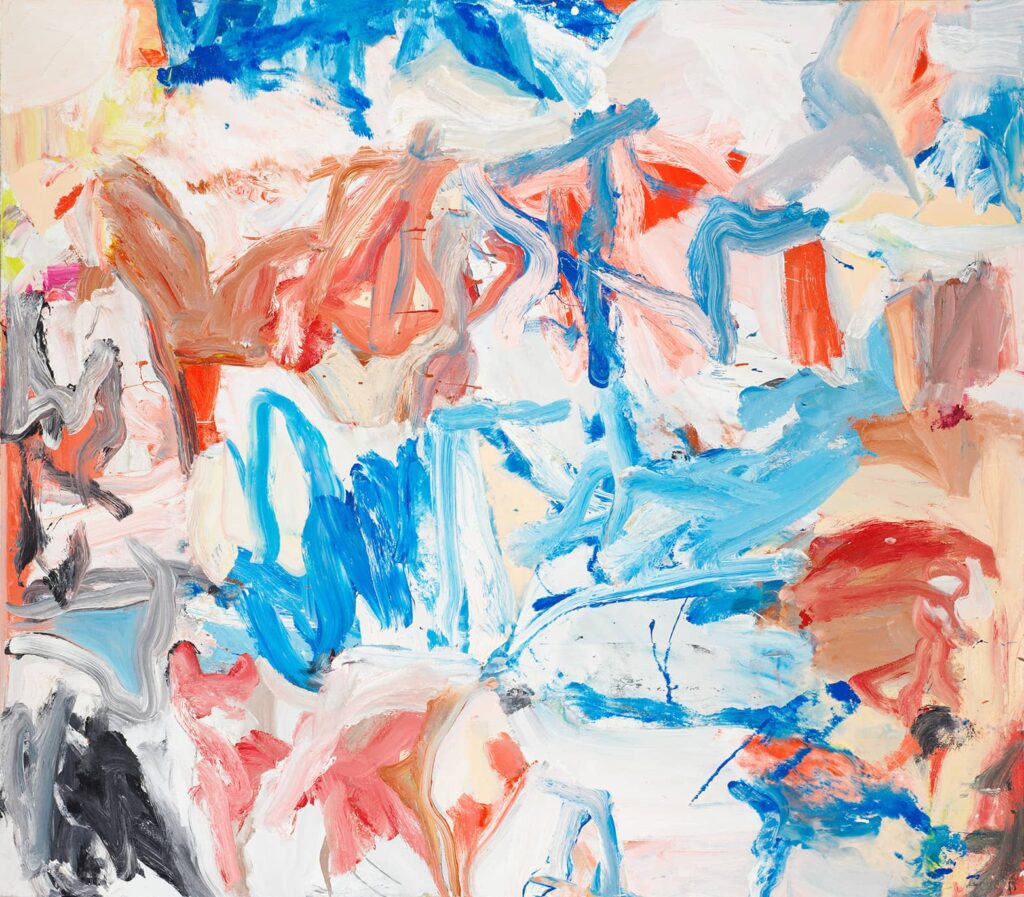A Handsome De Kooning Retrospective at Venice Proposes That Italy Was Central to His Later Art
The exhibit explores the profound tension between the painter’s European, deeply classical training and his love of New York’s bold, experimental freedom.

Willem De Kooning: ‘L’Italia’
Gallerie dell ’Academia Di Venezia, Campo della Carità, Dorsoduro 1050, 30123 Venice, Italy
Though September 15, 2024
Willem De Kooning, one of the preeminent, if not the most celebrated painter of the New York School, is not a name one associates immediately with Italy. Yet a robust and extensively researched retrospective at the Accademia at Venice aims to propose that Italy was not peripheral, but rather central to De Kooning’s later art. With 75 works that include painting, drawing, and a robust selection of his lesser-known sculpture, the exhibit aims to demonstrate the deep impact of Italy on the artist’s work.
Opening at the same time as this season’s Biennale, arguably the largest art and most prestigious art event in the world, this handsome retrospective, curated by Gary Garrels and Mario Codognato, solidly anchors the bleeding-edge work of the Biennale pavilions with the pioneering efforts of one of their predecessors — De Kooning showed at the American pavilion of the 27th Venice Biennale in 1954. It’s also a meditation on how a physical locale and a way of life can deeply impact the output of a creative genius.
De Kooning was already a recognized titan of the art world when in 1959 he stayed for four months at Rome. In 1969, he would return to Rome for a show and discover that a New York friend, Herz Emmanuel, had a small foundry there. At his prompting, the artist decided to give poured bronze sculpture a try. The show centers around the impact of these two trips and how they allowed him to reinvent himself.

As a pioneer of abstract expressionism, De Kooning has always shuttled between landscape and the figure, representation, and abstract gestural play. In returning to sun-drenched Italy, he appeared to have found a happy medium, and, of course, an endless source of art and architecture to contemplate.
Italy adds an important counterpoint to this restless shuttling back and forth. His “Black and White Romes,” made in the capital in 1959, seize upon the energy of the local Roman arts scene, which also included another New York expatriate, Cy Twombly. In stark black and white, you can feel the excitement pulsing from each one as they transfigure his sense of his environs into pure gestural masses and explosions.
Alongside the “Romes” are three “Pastoral Landscapes” such as “Villa Borghese,” which point to an infusion of color and sun splashed lightness into his earlier, more boldly colored abstraction. These later works are handsomely contrasted with his earlier “Abstract Parkway Landscapes,” inspired by his drive out of Manhattan to Long Island. The progression is palpable.
Much could be read as the ongoing and profound tension between De Kooning’s European, deeply classical training and his love of New York’s bold, experimental freedom. You sense his constant wrestling between the figurative and representational with the abstract and the gestural, with both figure and landscape returning at rhythmic intervals.

“He was forever trying to ‘break out’” explains curator Gary Garrels. “De Kooning was never satisfied, you can see this in his drawing attempts, often done with his eyes closed. He was always getting at something at the heart of gesture, of figuration. He never made anything ‘easy’.”
Things really open up in the 1970s. This is the era of full on “wet on wet” application, done with an urgency and bravado that makes them appear as they were painted only a few hours previously. As Francois Xavier Saint Pierre, also a North American expatriate painter at Venice, helpfully pointed out to me during our walkthrough: “this is likely due to the use of Safflower oil in his paint.”
He adds that “the drying time is much longer, and he would have been able to really dig into the process over a longer period of time.” This is swashbuckling De Kooning, the work of a master fully coming into his powers at the height of a long career in a conversation with color and form.
The application is at points deliberately clumsy. De Kooning favored ungainly brushes affixed to broom handles or long sticks that increased the possibility of happy accidents. This truly comes together in “Screams of Children Come From Seagulls” a synesthetic title that can only can be truly be understood by an Italian.
As always, De Kooning unbuttons his gestural looseness as much as possible while flirting with unabashed prettiness, especially when he contrasts a signature salmon rose with an aqua blue. It’s easy to see the timeless colors of Italy folding themselves into his palette effortlessly, especially the sense of airiness, space, and light.
Most fascinating, though, are the sculptures, which have occupied some space in recent retrospectives but have never been given their full due. They are three-dimensional manifestations of what he had attempted to enshrine in paint ever since his earlier “Woman” series scandalized and electrified the art world.
He negotiates both figurative weight and the perils of legibility with his usual muscular aplomb, if not violent earthiness, beginning with clay and then finally pouring in bronze. This attempt to get to the bottom of the gestural and the figurative are further echoed in his drawings, often loose, hieroglyphic cyclones of mark making that carry the seeds of figurative and physical elements: a breast here, the bend of a limb there.
It all comes to a serene head, however, in the final room, where the untamed and roiling surfaces have been transposed into serene swashes of color that hang suspended in space. From his final decade of painting, they speak to the previous years of experimentation as well as the influence of Italianate painting. In returning to Italy and looking at endless Tiepolo, Tintoretto, and Veronese ceilings, he seems to have engaged in his own fascination with the figure floating in space.
As De Kooning said about his experience viewing art in Italian churches “I remember everything half-suspended or projected into space. The paintings look right from whatever angle you choose to look at them. The whole secret is to free yourself from gravity.”

